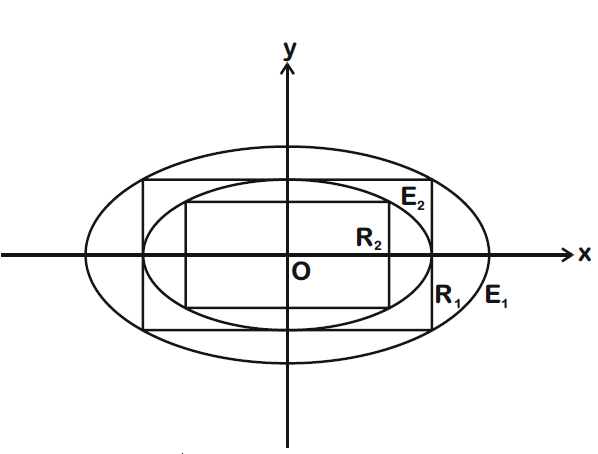- Tardigrade
- Question
- Mathematics
- Define the collections E1, E2, E3,... of ellipses and R1,R2, R3,... of rectangles as follows: E1: (x2/9)+(y2/4)=1; i?R1: rectangle of largest area, with sides parallel to the axes, inscribed in E1; En: ellipse (x2/a2n)+(y2/b2n)=1 of largest area inscribed in Rn-1, n > 1; Rn: rectangle of largest area, with sides parallel to the axes, inscribed in En, n > 1. Then which of the following options is/are correct?
Q.
Define the collections {,... } of ellipses and {,...} of rectangles as follows:
i?: rectangle of largest area, with sides parallel to the axes, inscribed in ;
: ellipse of largest area inscribed in
: rectangle of largest area, with sides parallel to the axes, inscribed in .
Then which of the following options is/are correct?
Solution:
Let a vertex of be (acos, bsin)
Area of = 2acos × 2bsin
Area of will be maximum if
So, maximum area of
Now, ellipse will have semi-major axis and semi-minor axis
maximum area of
Similarly and so on.
So,
and maximum area of
(A) All ellipse have same eccentricity because the ratio of semi-major axis and semi-minor axis is same for all ellipses.
(B) Length of latus rectum of
Length of latus rectum of
(C) area of rectangle area of area of
area of rectangle
area of rectangle
area of rectangle
area of rectangle
(D) Distance between focus and centre of
